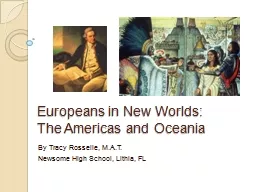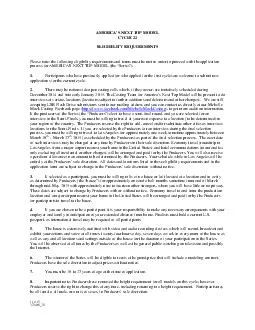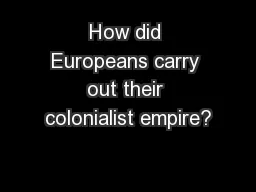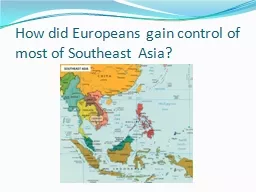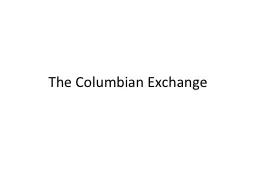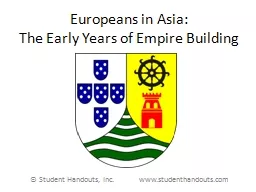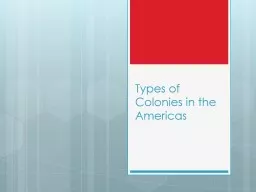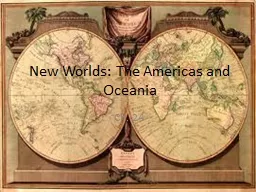PPT-Europeans in New Worlds: The Americas and Oceania
Author : lois-ondreau | Published Date : 2020-01-28
Europeans in New Worlds The Americas and Oceania By Tracy Rosselle MAT Newsome High School Lithia FL The Spanish Caribbean Columbus and those who came in his wake
Presentation Embed Code
Download Presentation
Download Presentation The PPT/PDF document "Europeans in New Worlds: The Americas an..." is the property of its rightful owner. Permission is granted to download and print the materials on this website for personal, non-commercial use only, and to display it on your personal computer provided you do not modify the materials and that you retain all copyright notices contained in the materials. By downloading content from our website, you accept the terms of this agreement.
Europeans in New Worlds: The Americas and Oceania: Transcript
Download Rules Of Document
"Europeans in New Worlds: The Americas and Oceania"The content belongs to its owner. You may download and print it for personal use, without modification, and keep all copyright notices. By downloading, you agree to these terms.
Related Documents

